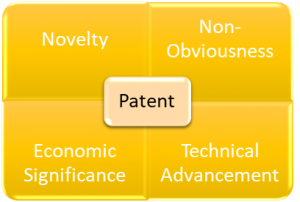This article is written by Swapna Gokhale, pursuing a Diploma in Intellectual Property, Media, and Entertainment Laws from LawSikho.
Table of Contents
Introduction
Many of us start our day with orange juice, bread, yogurt, etc. Things like Vit.C or fermented or Protein filled food items can be credited to biotechnology. Insulin, blood transfusions, anti-cancer drugs, autoimmune drugs, and pasteurization are few examples of patented biotechnology.
India is ranked 12th in terms of biotechnology. A vast amount of intellectual investment in the form of research and development is required for the biotechnology industry. Thus, it is very vital to know the IPR rights involved in it. Modern Biotechnology plays a key role in the latest sectors like, stem cell-related research, embryology, and cell biology, bioremediation (an engineered technique applied by humans to clean the environment), and biodegradation (a natural process that occurs in the environment), etc.
Biotechnology is the technique wherein biology, especially the genetic manipulation of microorganisms are used for the production of antibiotics, hormones, etc., to solve problems and make useful products. Microorganisms are neither animals nor plants. They are tiny living things that cannot be seen by the naked eye and which are used as a medium in biotechnology. e.g. bacteria, fungi, archaea, protists. Now, the question is, can anything developed or invented using microorganisms be termed as an invention? Can it be protected under relevant IPR law? Or is any invention using living things patentable? How IPR law treats biotechnological inventions? Let’s discuss it here.
Forms of biotechnology
Bio (living cells) + technology (application of scientific knowledge) is biotechnology. Mankind has used a variety of forms of biotechnology since the beginning of civilization. For example; aging methods (wine, bread, yogurt), fermentation (fermented food), preservation i.e. technique of extending the shelf life of food by using natural or controlled microbiota E.g. salting, drying, freezing, etc., specific plant breeding i.e. some specific plants display different characteristics having attractive qualities. It is the deliberate fusion of closely or distantly related breeds to produce new crop varieties.
There are three broad sectors of biotechnology-
- Healthcare biotechnology – which involves biotechnology for the production of drugs. e.g. vaccine
- Agricultural biotechnology – This involves biotechnology for the improvement of plants to make them more adaptable to changing environments.
- Industrial/product biotechnology – This involves the usage of biotechnology in the processes for the preparation of products, which are more eco-friendly, e.g. bioplastic, bio-fuel, etc.
Role of IPR in biotechnology
Everything which is invented, created or developed, by using the human brain naturally possesses an element of ownership rights under relevant intellectual property law. Likewise, biotechnological inventions by humans also have the same claim of ownership rights. Intellectual property rights protect one’s inventions. But the success of any technological invention is based on ownership rights and commercial exploitation of it.
IPR involved in biotechnology
Trademark, copyright, patent, GI, industrial designs are some of the forms of IPR. But the most popular form of IPR corresponding to biotechnology is patent. Section 3 of Patent Act 1999 gives a list of the things that are not inventions. In this section, subsection (d) of Section 3 says that mere discovery of a scientific principle or the formulation of or discovery of any living thing or non-living substance occurring in nature cannot be termed as inventions and therefore are not liable to get patented.
And subsection (j) of Section 3 says that plants and animals in whole or any part thereof other than micro-organisms but including seeds, varieties, and species and essentially biological processes for production or propagation of plants and animals are not patentable inventions. Thus, the Patent Act 1999 protects the usage of microorganisms in inventions. But those need to be an invention rather than mere discovery. Thus, the use of microorganisms to process subject matter to prepare utilized products with the help of the human brain and technological support is protected under the biotechnological patent, under the Patent Act 1999. Biotechnology includes scientific and industrial strictness to utilize living and biologically active material in the final product. But what is the criteria to get the said inventions patented?
Criteria for patent
The inventions relating to traditional knowledge are excluded from the criteria of “inventions” by the Patents (Amendment) Act, 2002, as is defined under Section 2(1)(l) of the Patents Act, 2005. According to this definition of a new invention, the act talks of absolute novelty, i.e. the invention should have neither been used anywhere in the world nor published in any part of the world. Also, in addition to the novelty, the said inventions should be non-obvious, it should involve technical advancement as compared to the existing knowledge and should have economic significance, in order to get patent protection. Thus, there are four criteria under the Patent Act 1999 for patent protection.

Issues relating to IPR in biotechnology
Although biotechnology plays an important role in saving, improving, and extending human life, the process behind the work of patenting these scientific advancements is an extremely complicated one.
Under Section 3 (e) of Indian Patent Act, a substance obtained by a mere admixture develops only in the aggregation of the properties of the components thereof or a process for producing such substance.” e.g. apple juice is a mixture of apple plus sugar which the only aggregation of the original taste of apple and sugar. Thus, this cannot be an invention.
The vast investment involved in the form of R & D personnel, infrastructure, financial investment, to create the results exploiting biotechnology. To promote such results and to give monetary stability and reimbursement for their intellectual efforts to the growing research sector, patenting the inventions in the said field is important. Unless your invention fits in the above-mentioned four corners of patentability, you may not be able to apply for a patent. Traditional methods usually utilise the living organism but modern forms of biotechnology will generally involve advanced modification of biological systems.
Inventions and compliance with TRIPS
As we know mere discovery of already existing things is not patentable under the law. It should contain technical inventions to create non-obvious results. But the main question is to prove the invention. There is no straight-jacket formula given under the law explaining the discovery and inventions. It depends upon the facts of the cases. When we say Turmeric Patent, or Neem patent, the same is not simple Turmeric or Neem tree but the new variant of the same which has been protected under patent law. Thus, when it involves technical advancement only then it can be called an invention that can come under the umbrella of a patent. But still, there is no direct and clear provision defining what exactly can be considered as a technically advanced version of an already existing substance.
Because of technical and ethical issues involved, legal protection remains very sensitive and complex in the case of biotechnology. The Indian biotech industry at present is facing great challenges of Trade-Related Aspects of Intellectual Property Rights (TRIPS) compliant patent system in India. Article 27.3 (b) of TRIPS excludes biological processes for the making of plants or animals as patentable material, but patents can be granted to the microorganisms, and microbiological processes utilised in the production of plants and animals.
With advancements in biotechnological research and the pharmaceutical industry, policymakers have started allowing the patent of some basic life forms to encourage research and development spirit, because of which the unrecognized commercial utility of such life forms came to light. e.g. genetically modified plants and animal species, genes, cell lines, etc. Using refined and modern techniques of genetic engineering by biotechnologists, the microorganisms like bacteria, fungi, and viruses which are used as raw material, are converted into desirable forms.
However, the definition of a microorganism is nowhere given under the law. There is still debate on the same. Due to the lack of a precise scientific definition of microorganisms, there is still an anomaly in patenting these life forms. There is no clarity whether or not the term would come with solely genetically changed organisms or naturally occurring substances also.
According to the TRIPS Agreement, the following are some of the patentable micro-biological inventions:
(i) process of producing a new microorganism,
(ii) new microorganism itself,
(iii) process of growing or otherwise using a known or new microorganism to,
(a) a formation of multiplied microorganisms itself, for example, vaccines,
(b) a by-product of microbial growth, for instance, an antibiotic or an otherwise useful industrial product.
The TRIPS Agreement allows patents for microorganism and micro-biological processes but it neither defines the microorganism nor specifies the parameters for the scope of its protection.
Novelty and disclosure requirement
Biotechnology patents fall into the scope of utility patents. A utility patent is available for the invention of a new and the useful machine, manufacturing process, etc., and especially for improvements to an existing process to be considered as new and useful.
Since patent protection is granted only for invention and not for discoveries, in the case of biotechnology innovations, it is difficult to say whether the new life form is a scientific discovery or a technological invention. Rejection of biotechnological patent application may be on the ground that the same is only a creation of nature or when it comes to genetically modified organisms, tissues, and cells he can simply say that it is an apparent variant of what organically occurs in nature, and therefore that is ineligible for a patent.
Discovery is simply making available what is already found in nature which is non-patentable. However, if the process is developed or invented for obtaining the substance by isolating it from its surroundings, which already existed in nature, then that process is considered an invention and hence patentable. But using this criterion, the minerals, ores found in the deep ground of earth or sea can be called inventions. Thus, though the Indian patent law regime considers the microorganism as patentable, there is so much controversy in the patentability of microorganisms claiming to be lacking a novelty element in it.
Further, in the case of inventions, a description of the subject matter insufficiently clear and complete manner is required. For example, to get a patent for a new pharmaceutical product it must include enough applied information so that anyone conversant with the relevant technical field is able to follow the indicated steps and reproduce it. But in the case of biotechnological inventions wherein microorganism is the raw material, the requirement of a literal description of the same will not practically be possible. Therefore, for inventions involving microorganisms, a specific requirement of deposit of biological material must be made in a recognized institution. i.e. International Depositary Authority as recognised in Budapest Treaty which is an international treaty signed in Budapest, Hungary, on 28 April 1977 and administered by WTO. According to this treaty, the applicant needs to only deposit the biological material at one recognized institution and this deposit will be recognised in all countries that were party to the Budapest Treaty. Thus, the patenting process of biotechnological inventions becomes multistep and complex.
Commercial application and monetisation
The consideration of the commercial application is yet one more hurdle for getting patents for inventions in biotechnology. However, in India, there are several moral issues related to patenting of life forms. The most important is whether private ownership can be extended to life forms. Due to the lack of established practice to protect the life forms under relevant IPR law, there is a large amount of unreliability and controversies related to the IPR protection of life forms. It’s not so with regard to ownership of property that features a tangible market price. Fixing monetary value to anything that is not tangible or physical having market value is a crucial question. Hence, there is a need for an hour for developing countries like India to define clear policies for IPR just in case of scientific and technological innovations.
Even in this modern era, naturally occurring organisms are considered as god’s gift, which cannot be owned by any person or organisations, or entities by just modifying it or tinkering with it. Therefore in the case of biotechnology, a lot of controversies is there for its entitlement of IPR protection.
Corporate domination
Plant biotechnology is another milestone that could be achieved by human beings by R&D processes that could fetch attractive returns. However along with boosting research in the area of plant biotechnology, it could also result in higher prices for seeds, thus naturally excluding the small and local farmers from accessing such new technologies.
Further, there is a serious problem of exploitation of traditional knowledge of farmers about plants or animals, by private entities and claiming the exclusive right to produce and sell many ‘modified’ plants and animals. This is a significant matter of concern today that knowledge, innovation, and efforts of these people are not acknowledged due to the grant of patents on genetic and biological materials and on living organisms to private companies by the existing legal ‘intellectual property rights systems. While the corporations are making huge revenues from this process, the local communities are unrewarded. Also, the threat of having to buy the products of these companies at high prices in the future cannot be ruled out. Hence, such a system of IPR only benefits the big industries or multinational companies in developed countries at the expense of the developing countries.
Possible ways to overcome these obstacles
Patents on biotechnology are often the most important asset of the nation. Modern India has a strong focus on science and technology, realizing that it is a key element for economic growth. Thus, despite these obstacles, biotechnology companies continue to jump through the hurdles to patent their inventions. In fact, the business of most biotechnology companies obviously relies on intellectual property rights. Strong IPR protection reduces the risk for the investors.
- In order to overcome all the issues pertaining to IPR and biotechnology, the need to develop clear and strict national IPR policies is undisputed.
- Further, there should be clarity in the patentability of the subject matter with regard to biotechnology and new life forms.
- The most effective way out to achieve this is, spreading awareness among farmers about the legal framework in the form of living cells and farmer’s rights in the country to safeguard their interests and provisions about infringing incidences.
- Additionally, the farmers need to get their share of profit by means of appropriate benefit-sharing arrangements considering their primary and direct role in generating new plant variety or conservation of biodiversity.
- In short, an effective IPR system will be the most helpful tool to promote investment in biotechnology.
Legal provisions and government policies
- Biotechnology Patent Facilitation Cell (BPFC) : TRIPs provided options to member states protecting new plant variety by means of a patent or sui generis system or both. Accordingly, India opted for a sui generis protection system and therefore prepared a new act i.e. “Plant Varieties Protection and Farmers Right Act-2000”, to enable the farmer to save the seeds of a protected variety, besides offering protection on farmers’ derived variety, India. To connect the research outcome with its usage for the advantage of the creators, the Department of Biotechnology established a “Biotechnology Patent Facilitation Cell (BPFC)” in July 1999.
The Department of Biotechnology works under the Ministry of Science & Technology and provides services in the areas of research, infrastructure, generation of human resources, popularization of biotechnology, promotion of biotech industries, and establishing centers of excellence. The BPFC was formed with the aim to provide an awareness cum facilitation mechanism to create awareness about IPRs among scientists and researchers and further to provide patent facilities to biologists and biotechnologists in the country for filing Indian and foreign patents on a sustained basis.
- National Research Development Council(NRDC) : It was established by the Government of India with the primary objective to promote, develop and commercialize the technologies, inventions, patents, processes emanating from various R&D institutions or universities and is presently working under the Department of Scientific & Industrial Research
Case studies
Indian Patent Act 1970 defines a patentable invention as, a new product or process involving an inventive step and capable of industrial application. Earlier the living organisms were non-patentable. However, this status has been changed with the landmark decision of the Supreme Court, USA, in Diamond v. Chakraborty in 1980, when the genetically modified bacterium was granted a patent.
- Dimminaco A G v. Controller of Patents & Designs
In India, the very first benchmark decision with regard to the patentability of biotechnological processes with living organisms was given by the Calcutta High Court in the case of Dimminaco A G v. The Controller of Patents & Designs, decided on 15th January 2002. This decision paved the way for the patenting of the inventions where the final product of the claimed process is living microorganisms.
The facts of this case are that Dimminaco A.G., a Swiss Company applied for patenting the process for the preparation of a Bursitis Vaccine for infectious poultry disease. The Assistant Controller of Patents & Designs refused the process for the preparation of infectious Bursitis Vaccine on the ground that the living virus was used to prepare the vaccine claim did not meet the requirements of an “invention” under Section 2 (j)(i) of the Act and therefore it can not be said to have ‘manufactured’ and therefore not patentable.
While reversing the decision of the assistant controller and allowing the appeal, Hon’ble Calcutta High Court held that the process of preparing a vendible commodity (vendible means it can be sold or purchased commercially) containing a living substance is not out of the purview of the word, ‘manufacture.’ Thus patent protection can not be denied due to usage of the live virus in vaccines. Furthermore, the end product was novel, capable of industrial application, and was useful for protecting poultry against contagious Bursitis infection, thus making the process an invention. The court allowed the appeal and directed the petitioner’s patent application to be reconsidered within two months of the publication/delivery of the judgment.
-
Monsanto Technology Pvt. Ltd. v. Nuziveedu Seeds
Mahyco Monsanto Biotech Pvt Ltd (India), is the Indian joint venture of Monsanto. This company has been licensing its biotechnological products to various seed companies in India. Monsanto licensed its patent IN214436 to Nuziveedu Seeds and its subsidiaries Prabhat Agri Biotech and Pravardhan Seeds on 21/2/2004 which was relating to BT cotton in which there was recombination of DNA due to which the plants became resistant to bollworms. Due to the refusal by Monsanto to reduce the special compensation which was payable by the Indian companies under the license, the Indian Companies stopped paying royalties. Thus, Monsanto filed the petition for violation of registered patent before the High Court of Delhi.
The plaintiff claimed that their patent is the man-made NAS(Nucleotide Acid Sequence, Bt gene), which is useful for killing bollworms when it is inserted in cottonseed. And the respondent Nuziveedu’s claim was that NAS was just a chemical composition that is not capable of reproduction and not a man-made inventive microorganism, which can be useful for industrial application. The Division Bench of the Delhi High Court rejected the application on the ground that the said invention was not patentable subject matter under Section 3(j) of the Patents Act, 1970 (the Act).
The primary issue, therefore, was whether NAS is a part of the plant or seed, after its insertion? The Supreme Court in this case set aside the order of the division bench and held that the validity of the patent cannot be on the basis of prima facie examination. The Hon’ble Apex court then reverted back the matter back to the single bench of the Delhi High Court to be decided on the basis of expert advice and evidence. Though the decision of the Delhi HC may not have any significance for the immediate parties, since the patent period already expired in 2019, it would definitely establish the law for future applications for similar inventions.
Conclusion
Dr. Raghunath Mashelkar, who was director-general of Council of Scientific and Industrial Research (CSIR’s) once said in his interview;
“What is needed is a combination of scientific mumbo-jumbo and legal savvy to win the patent game as we did in the case of turmeric. The neem leaves that we used to keep away insects from our kitchen garden. Yet, a few years ago, a US company applied for a patent for neem as a pesticide and was granted it and we could do nothing about it. Although our scientists had been tinkering around with research on neem for years, they had not applied for this specific process and the battle was lost.”
Indian patent law gives excluded lists for patents and not included lists. Thus, these exceptions can be vague, leading sometimes to uncertainty and this is especially true for biotechnology inventions, due to the complex nature of the technology. Thus, there is a need for clear guidelines and policies for the implementation of Intellectual Property Rights (IPR) in India so that the people like farmers or scientists both get recognition for their efforts and contributions to prevent bio-piracy.
Considering the investment of time and finance that is required for R&D activities, granting Intellectual Property Rights (IPR) is an effective tool to protect biotechnology inventions. The Biotechnology Sector is identified as one of the sectors by the Government amongst 25 sectors that will be covered under the Make in India plan as announced by our prime minister recently. There are, however, no internationally accepted guidelines for the management of IPR. Therefore, it requires the urgent formation of user-friendly smooth business processes and precise legal structure for intellectual property rights to achieve the overall growth of the nation.
Knowing the complications and limitations of biotechnology, patents are an essential tool to make sure that these lifesaving technologies are properly protected to improve the world. Otherwise, the days are not far away when we would have to buy the patented product or process from outside India although having the same with us for ages.
References
- https://www.iam-media.com/patenting-biotechnology-indian-scenario
- https://link.springer.com/article/10.1057/jcb.2010.20
- https://www.labiotech.eu/in-depth/biotechnology-patents-intellectual-property/
- https://www.mondaq.com/india/patent/506468/protection-of-biotechnology-under-indian-laws
- https://www.mondaq.com/india/patent/444410/indian-government-initiatives-to-boost-up-make-in-india-campaign-in-biotechnology-sector?type=mondaqai&score=79
- http://fbae.org/2009/FBAE/website/our-position-ipr.html
- https://www.mondaq.com/india/patent/900702/microorganisms-and-the-indian-patents-scenario-#:~:text=According%20to%20Section%203.
- https://papers.ssrn.com/sol3/papers.cfm?abstract_id=2383027\
- https://www.ip-watch.org/2018/05/20/five-years-indian-supreme-courts-novartis-verdict/
- http://www.legalserviceindia.com/article/l400-Controversy-of-Section-3(D)-of-The-Indian-Patent-Act.html
- https://www.mondaq.com/india/patent/506468/protection-of-biotechnology-under-indian-laws#:~:text=In%20order%20to%20help%20the,DBT)
Students of LawSikho courses regularly produce writing assignments and work on practical exercises as a part of their coursework and develop themselves in real-life practical skills.
LawSikho has created a telegram group for exchanging legal knowledge, referrals, and various opportunities. You can click on this link and join:
 Serato DJ Crack 2025Serato DJ PRO Crack
Serato DJ Crack 2025Serato DJ PRO Crack











 Allow notifications
Allow notifications


